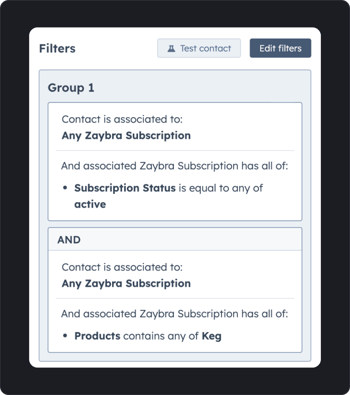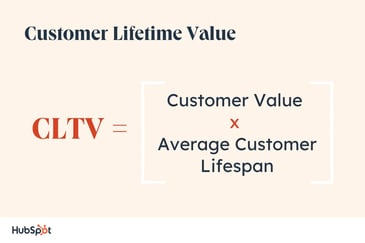While marketing might not be the first department you’d think would benefit from commerce data in their CRM, since they primarily operate before a payment is made, there are some interesting use cases for Marketing.
But first, what is commerce data?
What is commerce data and how do I get it in my CRM?
Commerce data refers to the information generated through commercial transactions and activities. It includes a wide range of data points related to buying, selling, and trading goods and services. It encompasses various aspects of business operations, such as customer behavior, sales figures, inventory levels, pricing, marketing campaigns, and more.
Your CRM platform, on the other hand, serves as the primary data source for your marketing, sales, and customer success teams.
By integrating back-office commerce data, such as accounting and payments, into the CRM, your go-to-market teams can leverage this information to enhance their activities and generate revenue through improved customer retention, faster payments, and increased sales opportunities.
There are three ways to get commerce data in your CRM:
Now that we’ve covered the basics, let’s look at how Marketing teams can benefit from this data.
Benefits of Commerce Data for Your Marketing Team
Marketing teams can greatly benefit from leveraging eCommerce data within their Customer Relationship Management (CRM) systems.
Let's look at a few examples of how marketing teams can utilize commerce data.
01 Personalized Marketing Campaigns
Commerce data in your CRM allows you to understand customer preferences, purchase history, and behavior. This information can be used to create highly targeted and personalized marketing campaigns that resonate with individual customers.
By tailoring your messages and offers based on their specific interests and needs, you can significantly increase engagement and conversion rates through highly targeted email campaigns.
For instance, if a customer has shown a preference for a specific product category, you can send them personalized emails featuring new arrivals or promotions related to that category. This level of personalization increases the likelihood of customer engagement and conversion.
By analyzing customer behavior, such as abandoned cart data, you can also create personalized campaigns to re-engage customers and recover lost sales.
For example, you can set up automated emails with customized offers to remind customers about the items they left in their carts, providing an incentive for them to complete the purchase.
02 List Segmentation
With commerce data in your CRM, you can effectively categorize and target your customer base, ensuring that your marketing efforts are personalized and relevant. By leveraging factors like purchase frequency, average order value, and product preferences, you can create distinct customer segments.

List Inclusion:
This enables you to deliver tailored marketing strategies, content, and offers, resulting in higher customer satisfaction and loyalty.
For example, you can create a segment of customers who have made multiple purchases in the past six months, allowing you to target them with personalized offers or loyalty rewards to encourage repeat purchases and foster customer loyalty.
List Exclusion:
And on the flip side, you have the ability to exclude specific individuals or groups from your lists. For instance, you can exclude customers who have already purchased a particular product to avoid marketing it to them again. Or, you can exclude customers from your marketing list based on their preferences or buyer persona when a certain offer or product does not resonate with them.
This helps you optimize your marketing efforts by focusing on customers who are more likely to be interested in new or different products, increasing the effectiveness and efficiency of your campaigns.
With the power of list segmentation in HubSpot, you can refine your targeting, enhance customer satisfaction, and drive stronger engagement with your brand.
03 Upselling and Cross-Selling Opportunities
By integrating your commerce system with HubSpot, you can leverage triggers to automate workflows based on customer actions and time intervals. These triggers allow you to do a number of things like welcome new customers, re-engage with churned customers, upsell to existing customers, and reward loyal customers.
Let's look at upselling and cross-selling.
Leveraging commerce data and HubSpot's automation, you can easily identify upselling and cross-selling opportunities. By understanding customers' purchase patterns and preferences, you have the ability to recommend complementary products or higher-priced alternatives, boosting the average order value and maximizing revenue per customer.
These are huge opportunities for marketers to tap into. In fact, "according to a 2022 HubSpot Blog Survey of more than 500 sales professionals, 72% of professionals who upsell and 74% who cross-sell say that it drives up to 30% of their revenue."
 Image Source: HubSpot Blog
Image Source: HubSpot Blog
Upselling:
For example, if a customer buys a lower-tier product or service from your company, you can send targeted emails recommending an upgrade or a higher-priced version that aligns with the customer's needs.
Cross-Selling:
Similarly, if a customer purchases a laptop, you can recommend software applications or peripherals that enhance their experience. This not only generates more revenue but also provides customers with relevant and useful recommendations, improving their overall satisfaction.
04 Customer Lifetime Value (CLV) Analysis
Commerce data enables you to calculate customer lifetime value, which is a crucial metric for measuring the long-term profitability of your customer relationships. By analyzing CLV, you can identify high-value customers and allocate resources accordingly, focusing on retaining and nurturing these valuable relationships.

Image Source: HubSpot
For example, you can identify customers with a high CLV and prioritize them for personalized retention efforts, such as exclusive loyalty programs, dedicated account managers, or early access to new features or products.
CLV analysis can also help in identifying opportunities for upselling or cross-selling to customers with a higher potential for long-term profitability. By understanding the CLV of different customer segments, you can allocate resources and marketing efforts towards those segments that have a higher potential for generating substantial revenue over time.
05 Marketing Analytics and Reporting
With commerce data integrated into your CRM, you gain access to valuable insights for marketing analytics and reporting. You can track and measure the effectiveness of marketing campaigns, analyze customer acquisition costs, monitor conversion rates, and identify areas for improvement.
These insights enable data-driven decision-making, allowing your marketing team to optimize strategies and achieve better results. Here are a few examples:
Conversion rates
For instance, you can measure the conversion rate of email campaigns promoting specific products or offers.
This data helps you evaluate campaign performance, optimize messaging, and make data-driven decisions to improve future campaigns.
Customer Acquisition Costs
By analyzing customer acquisition costs alongside commerce data, you can assess the return on investment (ROI) of your marketing efforts.
This allows you to identify which acquisition channels or campaigns are generating the highest-quality customers with the highest CLV, enabling you to allocate your marketing budget more effectively.
Ready to get started with Commerce Data in your CRM?
This is only just the beginning of the doors that commerce data in your CRM can open for you and your team.
Looking to get started? Reach out to our team at Aptitude 8 and we can ensure you can set up properly and offer recommendations for best practices that suit your needs.






